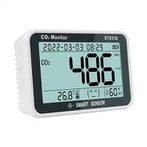How Can a pH Electrode Be Fixed?
The "damage" of the pH composite electrode, the phenomenon of which is the decrease of sensitive gradient, slow response and poor reading repeatability, may be caused by the following three factors, and generally customers can use appropriate methods to repair it:
(1) The electrode bulb and liquid junction are contaminated, and the dirt can be carefully removed with a fine brush, cotton or toothpick. The protective cover of some plastic shell electrode heads can be unscrewed, which is convenient for cleaning. If the pollution is serious, it can be cleaned with detergent according to the method in Article 8.
(2) The external reference solution is polluted, and some electrode structures can be added to the solution. At this time, the external reference solution of the electrode can be pumped out with a syringe, and a new 3.3mol/L or saturated KCl solution is prepared, and then added Go in, pay attention to pulling out when adding in for the first or second time, so as to clean the inner cavity of the electrode.
(3) Aging of the glass sensitive film: Soak the electrode bulb in 0.1mol/L dilute hydrochloric acid (9mL hydrochloric acid diluted to 100mL with pure water) for 24 hours, wash it with pure water, and then soak it in the electrode soaking solution for 24 hours. If the passivation is serious, you can also soak the lower end of the electrode in 45 hydrofluoric acid solution for 3 to 5 seconds (solution preparation: 4mL hydrofluoric acid diluted with pure water to 100mL), wash it with pure water, and then, Soak the electrode in the soaking solution for 24 hours to restore its performance.
How to clean the pH electrode?
After the bulb and liquid junction are polluted, they should be cleaned with the following solvents, then washed with deionized water to remove the solvent, and the electrodes should be immersed in the soaking solution for activation.
Contaminants Cleaning agents
Inorganic metal oxide less than 1mol/L dilute acid
Organic oils and fats Dilute detergent (weak acid)
Resin macromolecular substances Dilute alcohol, acetone, ether
Protein blood cell sediment Acid enzyme solution (Shimu raw tablets)
Pigment-like substances dilute bleach, hydrogen peroxide






